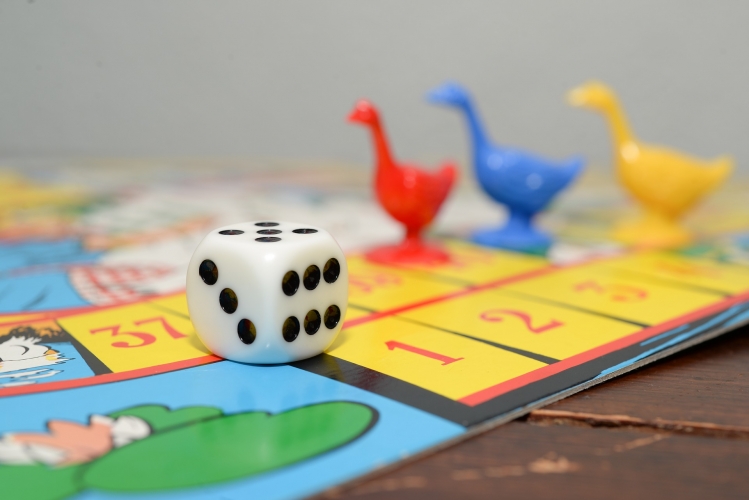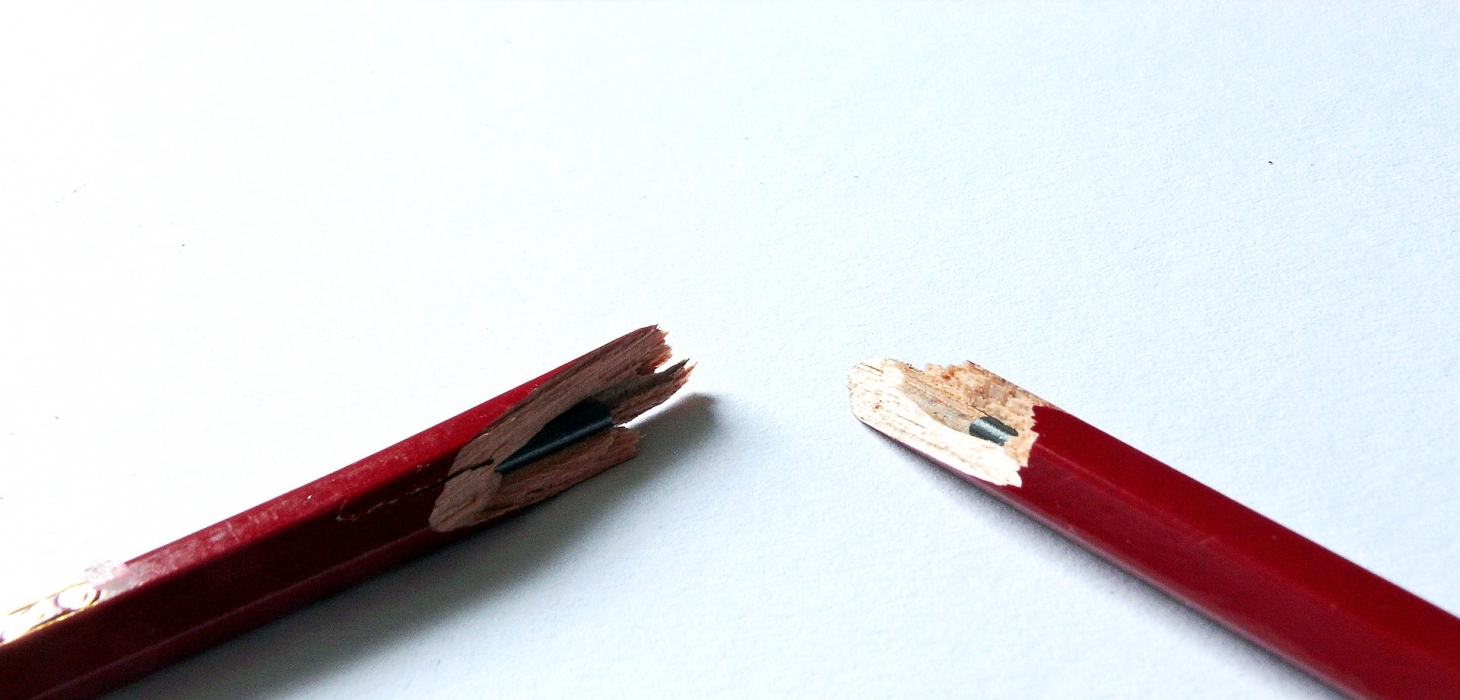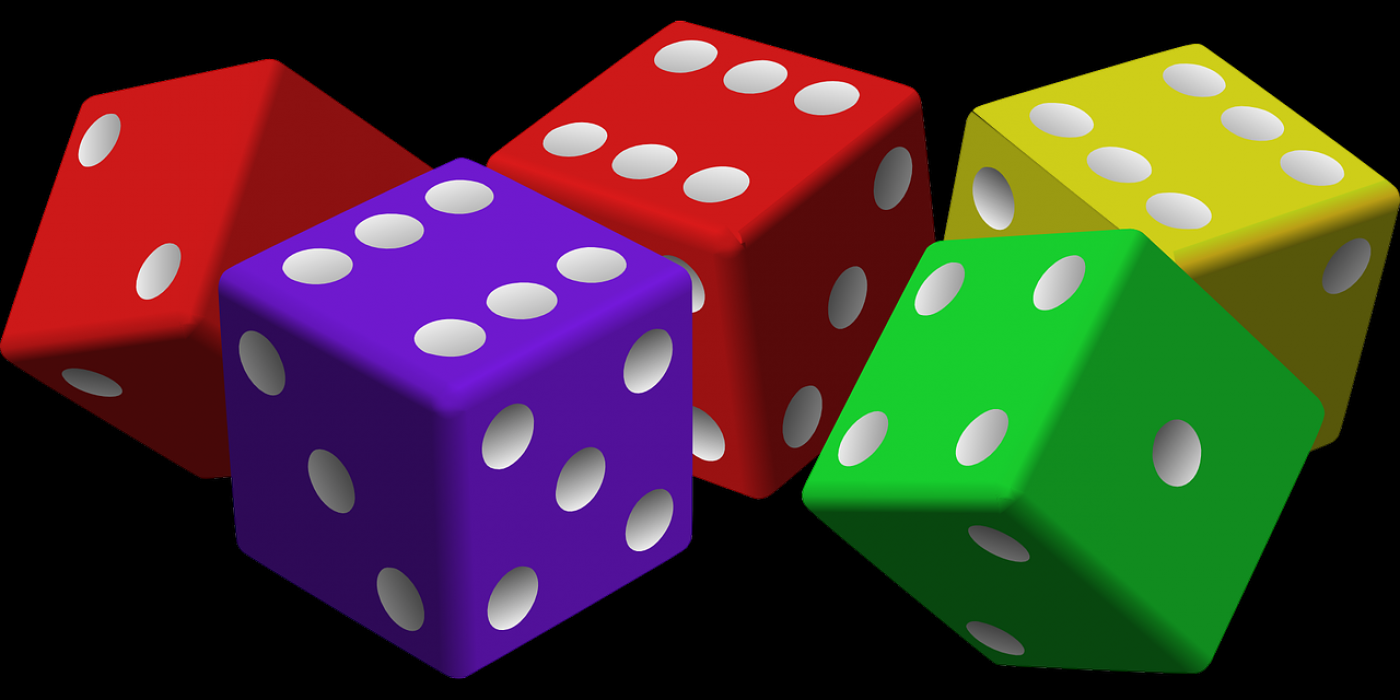Promoting Addition and Subtraction in K-2 with Math Games Using Dice

board game with dice
Are you tired of the evening struggle to help your child complete their math homework? Are you looking for ways to make your math curriculum more engaging and fun while providing an opportunity for students to practice their mental math skills? Including games in your curriculum is just the ticket. Both homemade and traditional games as well as commercial games you may already own can provide an alternative avenue for students practicing a variety of mental math skills. Very few of us enjoy completing a worksheet loaded with dozens of addition or subtraction problems. In fact, when my own son was in second grade, completing a relatively short worksheet of 20 addition or subtraction problems took nearly an hour. Yes, there was plenty of stress and bad feelings all around. Yes, it was an unsatisfying end to already long and full day. Yes, something had to change. 
Making math more fun and less stressful is a win-win situation. Doing without the homework angst is a bonus for any parent and child relationship. It was my own son that had the biggest impact on how I changed my teaching approach in mathematics to include games. Once we set aside the rows and columns of math problems, broken pencil lead, and worn out erasers, math time became a time for bonding, a time for sharing our day, and a time to practice mental math in a stress-free manner.
There are many reasons to use math games in your classrooms and at home. From a content perspective, the benefits of playing of math games are multifaceted. First, and perhaps most obvious, students are provided an opportunity to practice a skill in a stress free and fun environment. It would take my son over an hour to complete 20 or so math problems. This was not without frustration and disappointment. However, in a matter of 10 or 15 minutes, we could play a homemade math game in which we rolled two 10-sided dice to find the difference before moving around the board. I quickly became aware that my child was completing roughly 30 or 40 mental math subtraction problems in the span of 15 minutes with no tears. He also took great pleasure in checking and correcting my math as well! Playing games also encourages the learner to practice critical thinking and different strategies. Have you ever noted that when playing the game of Sorry! a very young child will move only one pawn around the board until it is safely home? An older child will attempt to manage two or three of the four pawns as they navigate the board. Even simple board games provide many opportunities for us to practice strategizing. In the process of rolling the dice and finding their sums as well as watching other players do the same, children will remember these facts as they construct their knowledge of single digit addition.

From a social emotional perspective, playing math games provides learners an opportunity to explore and experience social interaction, problem-solving, and critical thinking. So much of what we learn comes from our experiences working and playing with others. Watching a classmate or sibling skip count as they move their pawn across the gameboard can have a powerful impact on a learner’s personal practice in counting. After a few turns, the learner realizes the efficiency of this practice and begins to do it themselves. Playing games also gives us an opportunity to visit social problem-solving skills. How do we decide who gets to go first? How do we respond to other players when they make a mistake? How do we decide the parameters for winning (e.g., do I need an exact roll of the dice or can I roll that number or greater to “make it home”?). Leaving decisions likes these open-ended allows learners to think about what is fair and what works and provides an opportunity discuss and make their case. “Last time the youngest person went first. This time I think the oldest person should go first.” Playing games also encourages increased student participation and its downright fun!
The following are a list of five math games. These games are PDFs and may be printed and played immediately. Click here to download. Feel free to use them in your classrooms or at home. All you will need are some dice and bottle caps, paperclips, or other items from the junk drawer to serve as pawns or markers.
One More: One of the first addition skills young children learn is to add one to a number. In this game, players take turns rolling a six-sided die, adding one, and covering that number on the board. The winner is the first to use up all of their chips.
Doubles Cover-Up: Next, young children are taught their doubles (e.g., 2+2=4 and 3+3=6). Players roll a six-sided die, double the number and cover the matching number on their board. Winner is the first to cover all their doubles.
Sneaky Snake: Sneaky Snake is one of my all-time favorite games and if you don’t care for snakes you can easily draw a caterpillar or butterfly with 12 sections on posterboard or cardstock. Players take turns rolling two six-sided dice. They may add or subtract the numbers they roll to cover the numbers of 1 – 12 on the snake. First player to cover their snake wins.
Plus Five Bingo: Another early addition skill is to add 5 to a number. In this Bingo Game (great for classrooms or small groups), players take turns rolling a six-sided die and adding five to that number. Play continues until a Bingo is made.
22 Somethings: This deceptively simple game can be played on multiple levels. Players may place 11 items on any of their squares numbered 2 – 12. Players may take an item (paperclips work well) off the space only after they roll the sum indicated on the space. On the surface this game is a game of chance, however after children play it many times, they realized the difficulty of rolling certain sums and may choose to place more of their “somethings” on the numbers between 4 and 9, avoiding 2, 3, 11, and 12 as. This is a great way to begin introducing probability.
These are just a few fun games to assist your learner and they can easily be altered by changing the numbers on the board and or using 10- or 12-sided dice. Consider encouraging your learner to create their own math games. Children have a way of creating math games that are interesting and challenging, but not overly hard or too easy. They like a challenge. If you are concerned about the amount of time it may take to create games or you don’t feel very crafty urge your learners to decorate or consider reading my post about altering commercial games to suit your needs.
References:
Kamii, C. (2000) Young children reinvent arithmetic: Implications of Piaget’s theory, 2nd Ed., Columbia University, New York. Teachers College Press.
Kamii, C. (2004) Young children continue to reinvent arithmetic 2nd grade: Implications of Piaget’s theory (2nd Ed.). New York, Teachers College Press.
Scholastic Books (1995) Planet Dexter’s Shake, Rattle, and Roll! Cool Things to Do with Dice (That grown-ups don’t even know about). New York. Scholastic Inc.


